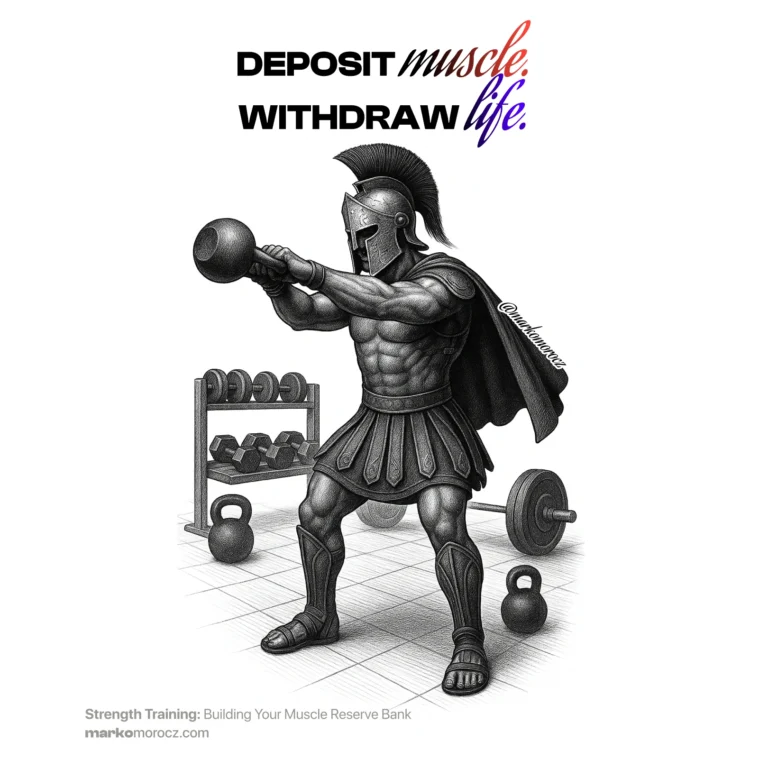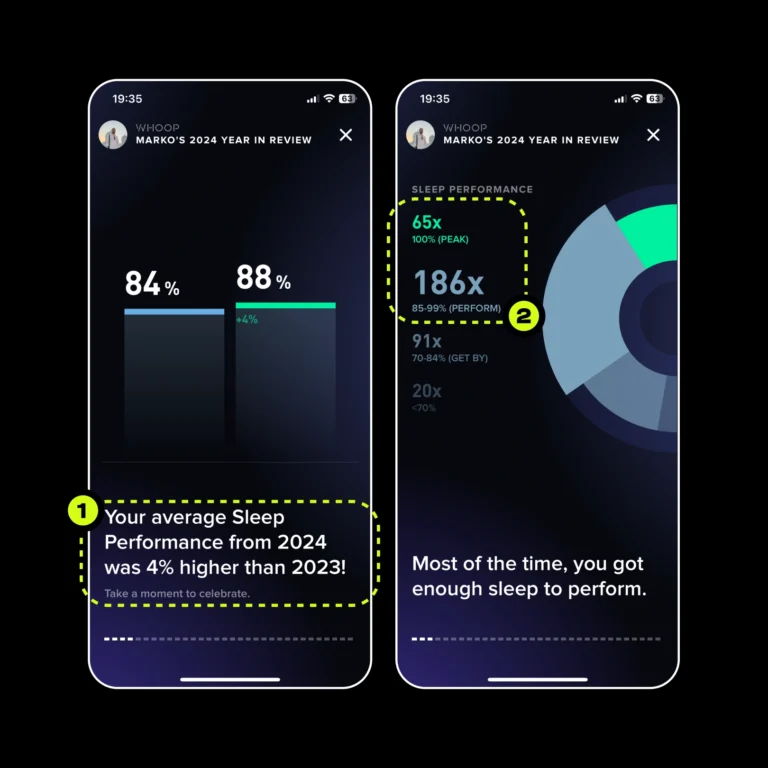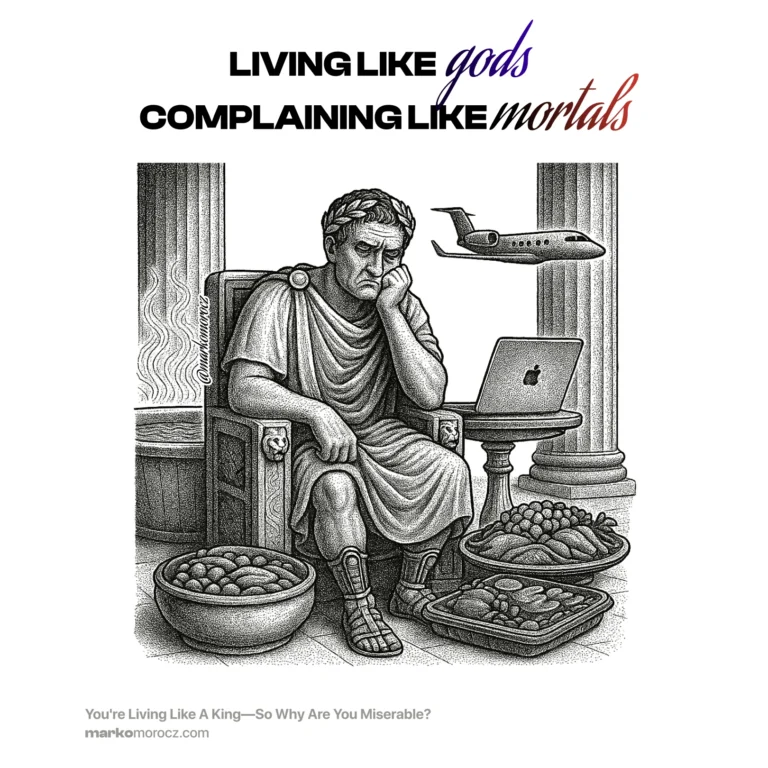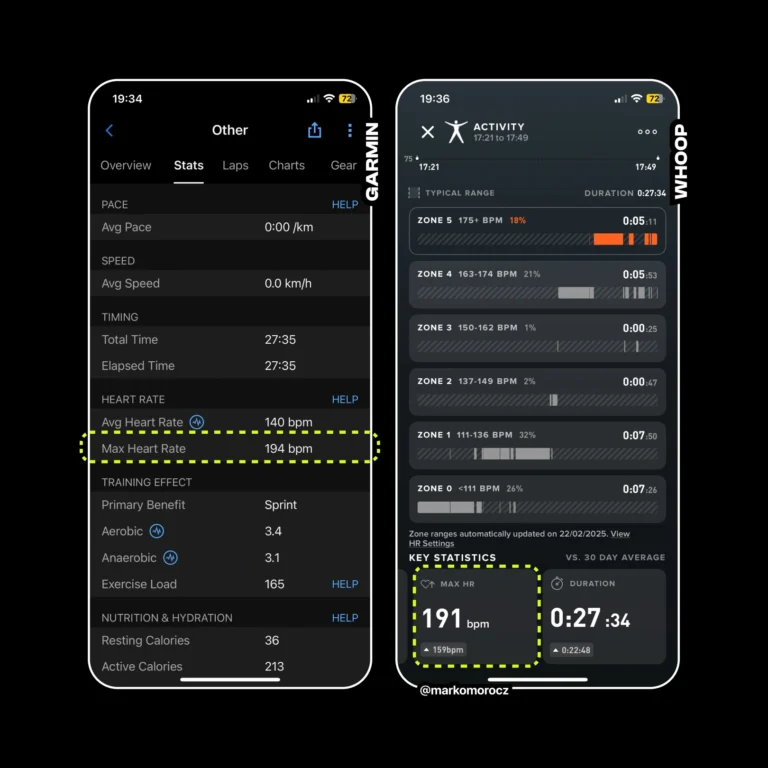The Stress Management Arsenal: 80/20 Techniques For Mental Gladiators
Your mind is a weapon.
But weapons need maintenance.
In the arena of life, mental sharpness isn’t optional—it’s survival.
Today, I’m handing you the toolbox. The 80/20 of stress management. The techniques that deliver maximum results with minimum investment.
Not theory. Not fluff. Battle-tested tactics proven by science and used by Navy SEALs, Olympic athletes, and Fortune 500 executives that work when you’re stressed, tired, and overwhelmed—which is exactly when you need them most.
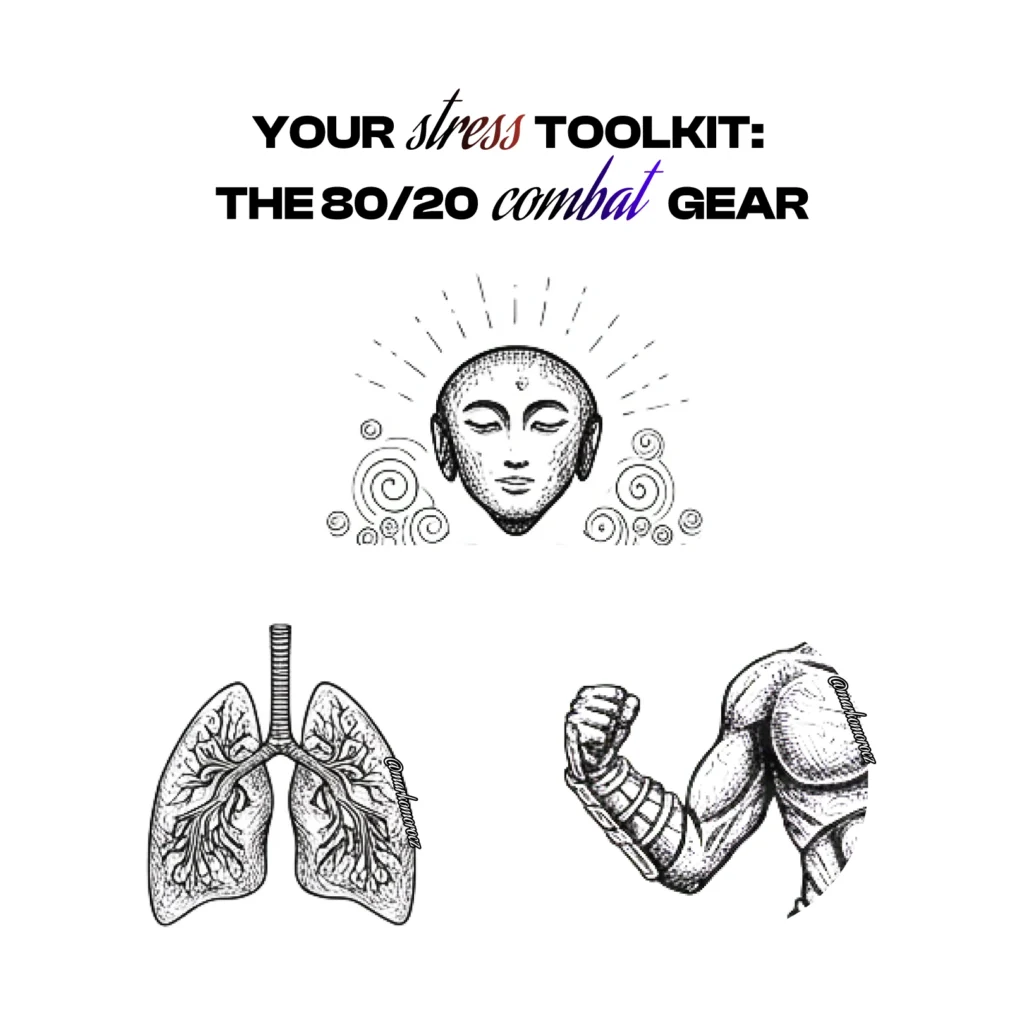
The Breathing Arsenal: Your First Line of Defense
Your breath is the remote control to your nervous system.
Learn to use it.
Box Breathing: The Navy SEAL Technique
What: Equal inhale, hold, exhale, hold pattern (4-4-4-4 seconds)
When: Before high-stakes situations or when anger/anxiety spikes
Impact: 43% reduction in sympathetic nervous system activity in under 2 minutes1
How:
- Inhale through nose for 4 seconds
- Hold for 4 seconds
- Exhale through mouth for 4 seconds
- Hold for 4 seconds
- Repeat 4 times minimum
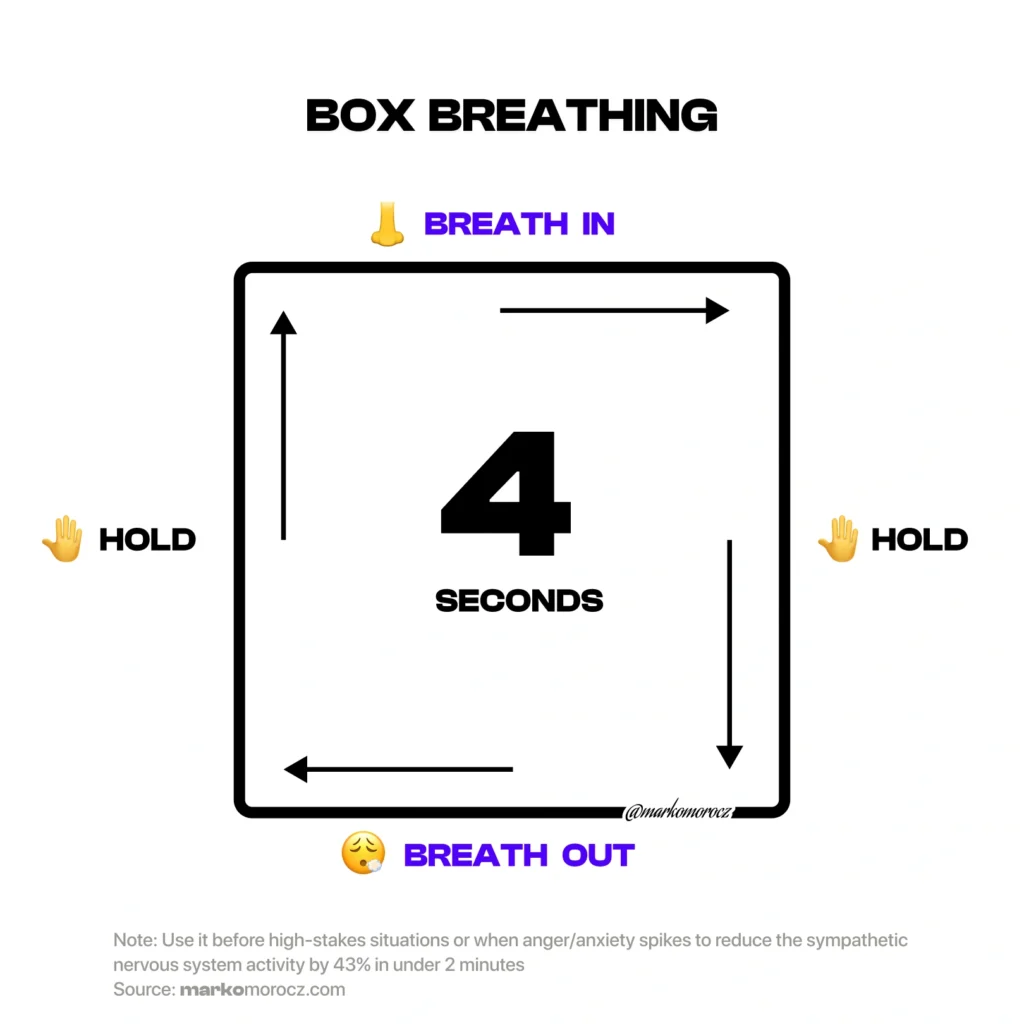
Navy SEALs use this before combat. You can use it before meetings, difficult conversations, or when traffic makes you homicidal.
Fun fact: Garmin watches have a “breathing” workout. Start it and it says “Ready. Relax and focus.” It happens to be box breathing. Coincidence? Decide.
4-7-8 Breathing: The Sleep Switch
What: Uneven pattern that triggers parasympathetic dominance—relaxation after stress
When: Before sleep or when you need deep calm
Impact: Demonstrated to lower blood pressure by an average of 8-10 points in studies2
How:
- Inhale through nose for 4 seconds
- Hold for 7 seconds
- Exhale through mouth with “whoosh” sound for 8 seconds
- Repeat 4 times
This isn’t meditation. It’s applied physiology. It works even if you don’t believe in it.
Alternate Nostril Breathing: The Mind Balancer
What: Alternating breathing pattern that balances brain hemispheres
When: When you need mental clarity or are stuck in rumination
Impact: Shown to improve cognitive function and reduce mental fatigue3
How:
- Close right nostril with thumb, inhale through left
- Close both nostrils, hold
- Release right nostril, exhale
- Inhale through right nostril
- Close both, hold
- Release left, exhale
- Repeat cycle 5-10 times
Sounds complex? It becomes automatic within days. The cognitive payoff is worth it.
The Physical Arsenal: Training Your Body to Handle Stress
Your body and mind aren’t separate systems. They’re one integrated network.
Change your body, change your stress.
Progressive Muscle Relaxation: The Tension Releaser
What: Systematic tensing and releasing of muscle groups
When: When physical tension is high or before sleep
Impact: Reduces cortisol levels by up to 30% and improves sleep quality4
How:
- Tense muscle group hard (5 seconds)
- Release suddenly (15 seconds)
- Notice the difference
- Move from feet to head
- Total time: 5-10 minutes
Most people carry tension they don’t even recognize. This makes the invisible visible.
The power of PMR extends beyond voluntary muscles—it reaches the organs and systems you can’t directly control. When you deliberately release tension in accessible muscle groups, your nervous system sends relaxation signals throughout your entire body.
Your digestive system eases. Blood vessels dilate. Stress hormones drop. Heart rate normalizes.
This is why PMR works so well for anxiety and sleep—it triggers a full-body physiological reset that conscious control alone can’t achieve. It’s like gaining backdoor access to systems typically beyond willpower.
The tension you feel? That’s just the surface. PMR dives deeper, releasing what you can’t even feel—the silent tension eroding your longevity from within.
The 5-4-3-2-1 Technique: Emergency Grounding
What: Multi-sensory awareness exercise
When: During panic, anxiety attacks, or when mentally spinning
Impact: Activates prefrontal cortex and reduces amygdala activation5
How:
- Name 5 things you can SEE
- Name 4 things you can FEEL
- Name 3 things you can HEAR
- Name 2 things you can SMELL
- Name 1 thing you can TASTE

This isn’t hippie nonsense. It’s neurological override of your threat response.
Power Posing: The Confidence Hack
What: Using expansive body positions to alter hormone levels
When: Before high-pressure situations
Impact: Reduces cortisol by 25% and increases testosterone by 20% in under 2 minutes6
How:
- Stand with feet wide, hands on hips OR
- Lean back, arms behind head, elbows wide OR
- Place hands palms down on table, lean forward
- Hold for 2 minutes
- Adopt natural but confident posture afterward
Your body position doesn’t just reflect your mental state—it creates it.
The Mental Arsenal: Reprogramming Your Thought Patterns
The highest leverage point in the stress cycle is your thoughts.
Master them, master stress.
60-Second Meditation: Battlefield Clarity
What: Ultra-condensed mindfulness practice
When: When overwhelmed or before important decisions
Impact: Measurable reduction in default mode network activity7
How:
- Focus solely on breath sensations at nostrils
- When mind wanders, gently return focus
- No judgment, just redirection
- Continue for 60 seconds (set timer)
Meditation isn’t about “emptying your mind.” It’s about training your attention—the most valuable currency in today’s world.
What’s the “default mode network”? It’s your brain’s autopilot system—the neural circuits that fire when you’re lost in thought, worrying about the past, anxious about the future, or caught in mental loops. It’s the brain state responsible for rumination, overthinking, and stress amplification.
When this network dominates, you’re living in your head instead of the present moment. Your stress multiplies. Your focus fragments.
Even a 60-second meditation temporarily disrupts this pattern, shifting brain activity from anxious thinking to present awareness. The result? Mental clarity precisely when you need it most.
The Circles of Control: The Stoic Filter
What: Rapid classification of stressors by controllability
When: When facing multiple challenges or feeling overwhelmed
Impact: Reduces perceived stress by 40% in studies on cognitive reframing8
How:
- List all current stressors
- For each, ask: “Can I directly control this?”
- If yes: Create action plan
- If no: Create acceptance plan
- Remove energy from uncontrollable factors
This isn’t about ignoring problems. It’s about efficient energy allocation.
This approach is based on Stoic philosophy and is sometimes referred to as the “Circles of Control, Influence & Concern” or “Spheres of Influence.” The visualization shows three concentric circles:
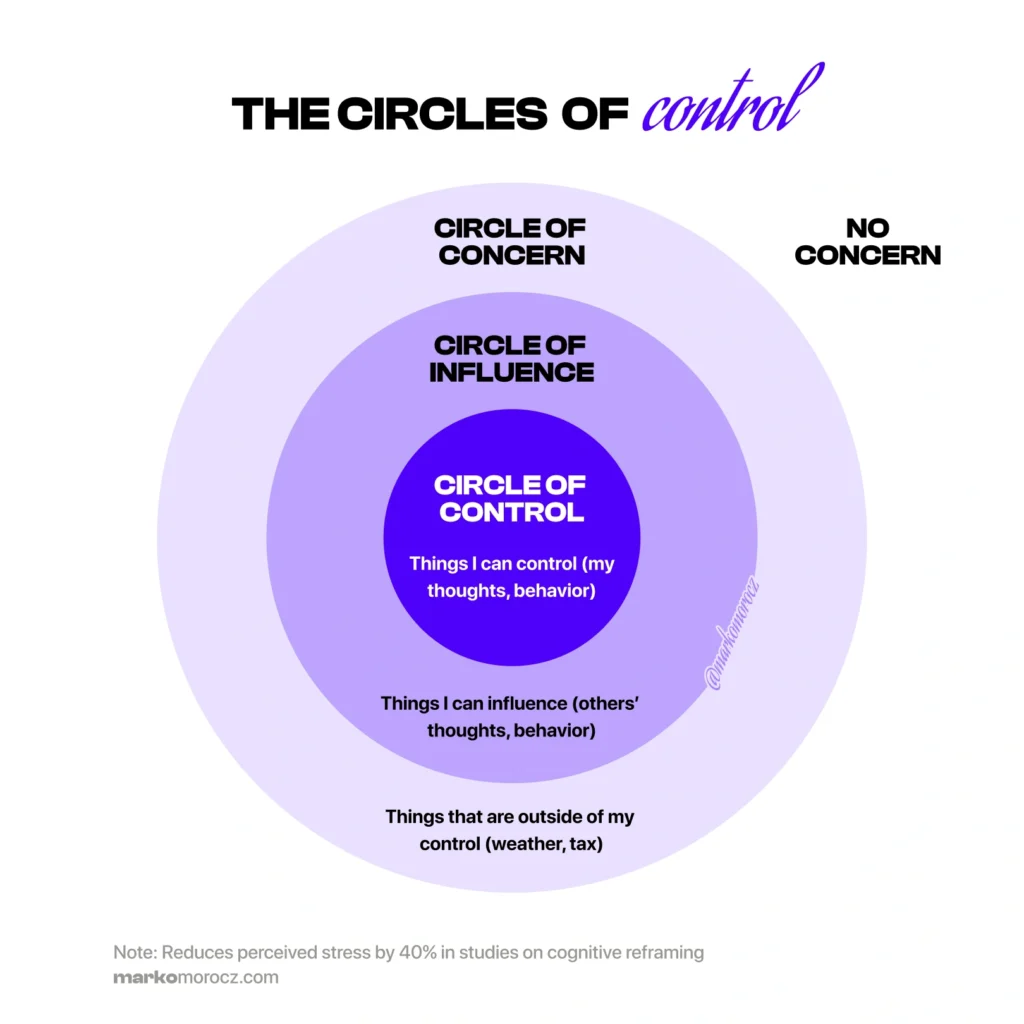
- Inner Circle: Things I can directly control
- Your thoughts and interpretations
- Your responses and reactions
- Your actions and decisions
- Your attention focus
- ACTION PLAN: Direct intervention and change
- Middle Circle: Things I can influence but not control
- Some relationship dynamics
- Your health (influence through habits)
- Team performance
- Certain project outcomes
- ACTION PLAN: Strategic influence and preparation
- Outer Circle: Things I cannot control
- Weather and natural events
- Other people’s opinions
- Market conditions and economy
- Past events
- ACTION PLAN: Radical acceptance and adaptation
For example: You’re stressed about a presentation. You control your preparation, delivery, and response to questions (inner circle). You influence but don’t control audience engagement and technical setup (middle circle). You cannot control last-minute schedule changes or what competitors are presenting (outer circle).
The stress reduction comes from this clarity—80% of your energy goes to the inner circle, 15% to the middle circle, and 5% to monitoring (not worrying about) the outer circle.
Misallocated energy is the primary source of preventable stress in high performers.
Thought Interruption Pattern: Breaking Mental Loops
What: Pattern interrupt technique for rumination, negative thinking
When: When caught in negative thought spirals
Impact: Reduces rumination duration by 70% with consistent practice9
How:
- Recognize rumination starting
- Say “STOP” loudly (internally or externally)
- Physically move or change position
- Redirect to predetermined productive thought
- Engage in absorbing activity if possible
Your brain forms thought highways. This technique creates detours until the old roads fade.
Implementation: Building Your Personal Stress Protocol
Knowledge without implementation is just entertainment.
Here’s your action plan:
1. Identify Your Stress Response Pattern
Most people default to one category:
- Physical Responders: Feel it in your body first
- Mental Responders: Racing thoughts first
- Emotional Responders: Mood changes first
- Behavioral Responders: Actions change first
Know your pattern, target your intervention.
2. Create Your Minimum Effective Dose
Pick ONE technique from each arsenal that resonates:
- ONE breathing technique
- ONE physical technique
- ONE mental technique
Three techniques total. No more.
Master these before expanding.
3. Build Your Implementation Triggers
Techniques work only when used. Link them to existing habits:
- Morning routine: Preventative techniques
- Transition periods: Reset techniques
- High-stress moments: Emergency techniques
- Evening routine: Recovery techniques
Example: Box breathing before checking email. 5-4-3-2-1 after difficult calls. 4-7-8 breathing before sleep.
4. Track, Adjust, Expand
Measure what matters:
- Subjective: Stress levels (1-10 scale)
- Objective: Sleep quality, resting heart rate, HRV
- Behavioral: Productivity, relationship quality, decision quality
After 21 days of consistent practice, evaluate and adjust.
The 80/20 of Stress Management: What Actually Matters
After years of research and self-experimentation, here’s the truth:
The 80% (what most people focus on):
- Perfect technique
- Comprehensive knowledge
- Multiple modalities
- Latest trends
The 20% (what actually works):
- Consistency
- Early intervention
- Personalization
- Progressive training
Stress management isn’t about eliminating stress. It’s about building your capacity to use it.
Elite performers don’t have less stress. They have better stress skills.
The Longevity Connection: Why This Matters
Chronic stress isn’t just uncomfortable—it’s lethal.
It ages you faster than almost any other factor:
- Accelerates telomere shortening
- Increases inflammatory load
- Disrupts mitochondrial function
- Impairs autophagy
Master these techniques, and you don’t just feel better—you literally age slower.
In a 10-year study, participants who effectively managed stress showed biological aging markers 3-5 years younger than their chronological age.10
That’s a longevity boost equivalent to perfect nutrition or optimal exercise—but often easier to implement.
Your Next Steps: From Knowledge to Mastery
- Today: Choose your 3 techniques (one from each category)
- This week: Practice each technique once daily
- This month: Link techniques to specific triggers
- This quarter: Evaluate impact and adjust
Don’t wait for stress to find you. Prepare now.
Because in the arena of life, the prepared mind doesn’t just survive—it thrives.
References
- Norelli, S. K., et al. (2021). “Physiology, Vagal Maneuvers.” StatPearls Publishing. ↩︎
- Lin, G., et al. (2019). “Heart rate variability biofeedback decreases blood pressure in prehypertensive subjects by improving autonomic function and baroreflex.” Journal of Alternative and Complementary Medicine, 25(2), 204-214. ↩︎
- Telles, S., et al. (2013). “Effect of alternate nostril breathing exercise on experimentally induced anxiety.” International Journal of Yoga, 6(2), 96-99. ↩︎
- McCallie, M. S., et al. (2006). “Progressive muscle relaxation and sleep.” Journal of Holistic Nursing, 24(4), 270-279. ↩︎
- McGreevy, S., & Boerstler, S. (2019). “Grounding techniques.” Journal of Psychosocial Nursing and Mental Health Services, 57(11), 17-20. ↩︎
- Carney, D. R., et al. (2010). “Power posing: Brief nonverbal displays affect neuroendocrine levels and risk tolerance.” Psychological Science, 21(10), 1363-1368. ↩︎
- Zeidan, F., et al. (2015). “The effects of brief mindfulness meditation training on experimentally induced pain.” Journal of Pain, 16(7), 641-652. ↩︎
- Troy, A. S., et al. (2013). “Seeing the silver lining: Cognitive reappraisal ability moderates the relationship between stress and depressive symptoms.” Emotion, 10(6), 783-795. ↩︎
- Wells, A., & Davies, M. I. (1994). “The Thought Control Questionnaire: A measure of individual differences in the control of unwanted thoughts.” Behaviour Research and Therapy, 32(8), 871-878. ↩︎
- Epel, E. S., et al. (2016). “Meditation and vacation effects have an impact on disease-associated molecular phenotypes.” Translational Psychiatry, 6(8), e880. ↩︎
Got questions about implementing these techniques? Drop them below—I’d love to hear which ones work best for you!
